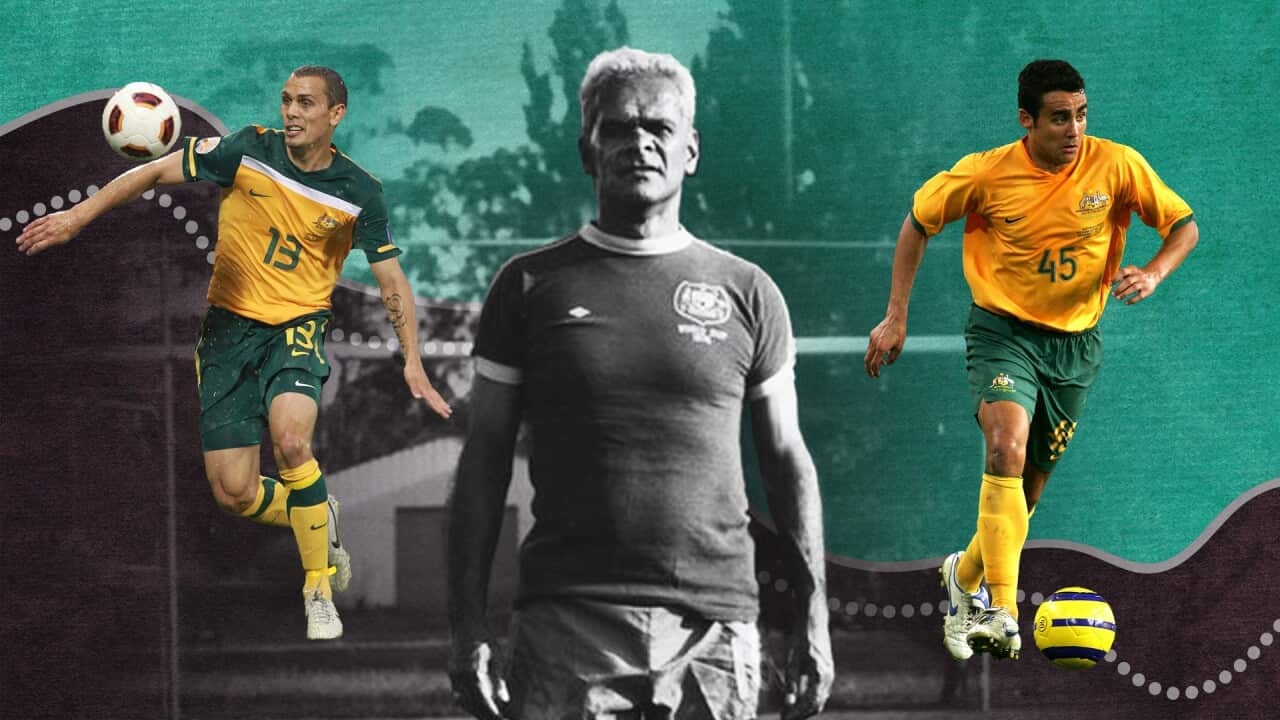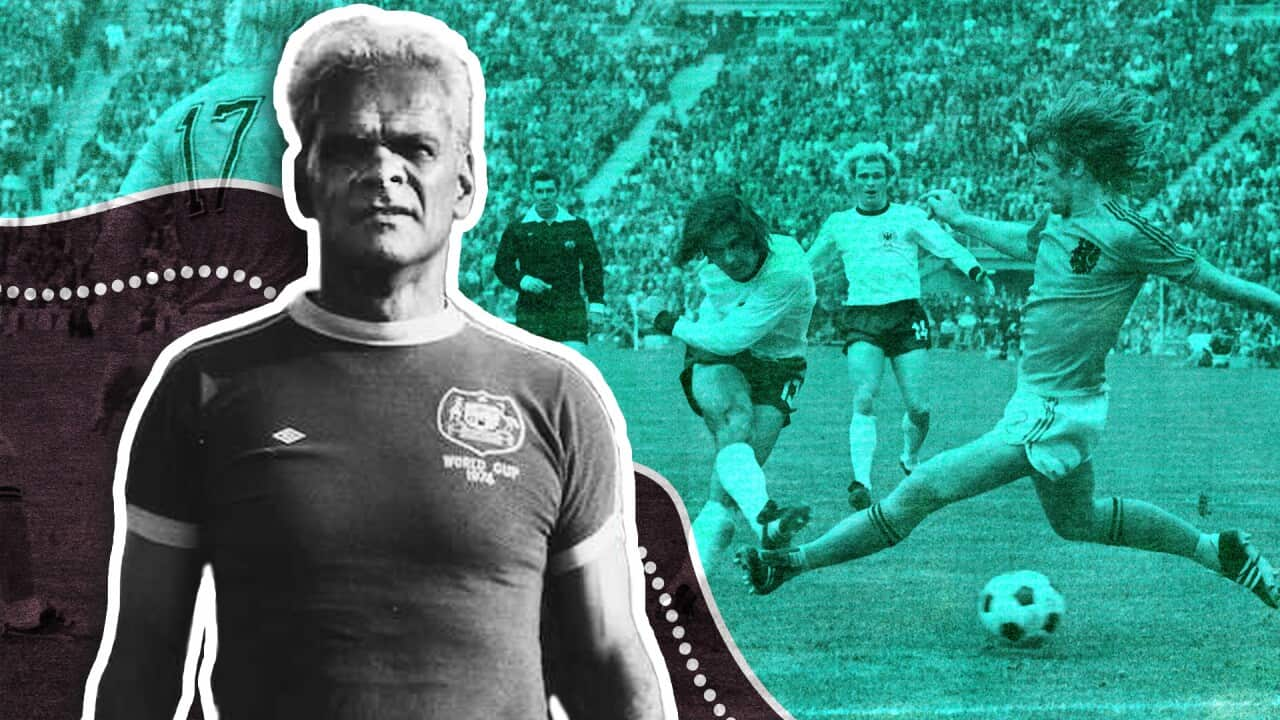Watching the Socceroos is always a pleasure for Jade North, especially at World Cup time.
"It's been great actually," he told NITV.
"A few surprises... it's been a good time to watch."
It's more personal for him than most: the Biripi man was once captain of the national side, the first Indigenous man to hold the honour.
Unfortunately there was no such representation this year on the world stage: the Socceroos currently have no Blak players.
"Even when I was playing there definitely wasn't enough that were participating in the A-League, let alone the Socceroos."
'We're at a crucial time'
Soccer in this country has always defied global trends: far and away the world's most popular game, here it plays second fiddle to rugby and AFL.
For First Nations people, whose glories in football have long garnered respect and admiration, those codes are important community staples.
But with community awareness of the game building, helped by the Socceroos' best ever performance at a World Cup, the lack of any Indigenous players on the national men's team sticks out.
"We're at a crucial point in time," said John Maynard.
The Worimi man literally wrote the book on the subject: 'The Aboriginal Soccer Tribe' recounts the successes of First Nations people in the game, and there are many. Despite the current dearth, there is a proud Blak history in the world game.
The legendary Harry Williams broke the glass ceiling of the World Cup, becoming the first Indigenous Socceroo to represent the country in 1974. More recently, the men's team had a strong Blak side.
"[In] the early 2000s through to 2010, we had five Aboriginal players break through to play with the Socceroos," he told NITV.
"Kasey Wehrman, Jade North, Travis Dodd, David Williams and Adam Sarota. And we had other Aboriginal players that burst through to the A-League: Taj Minnacon, James Brown and Paul Henderson.
"These players were really coming to the fore."

Jade North, part of the 'golden generation' controls the ball during the AFC Asian Cup Group C match between the Socceroos and Bahrain in 2011. Credit: Robert Cianflone/Getty Images
Financial hurdles an own goal
But according to Maynard this golden age of First Nations representation, which should have inspired a generation of younger Blak players around the country, was squandered.
"[It] seems to have dropped off... the game in the last five or six years for us has gone backwards.
For Maynard, the commercialisation of training programs have dried the wells of Indigenous talent that produced the crop of 20 years ago.
"We had a really good youth development program that ran through the Institute of Sport in Canberra. Jade North was in that [program].
"That was all taken away. In recent years, all of these youth development teams are being run by individuals. It's a money making concern, and young Aboriginal players are [locked] out of that."
These specialist development programs, which can cost hundreds of dollars, are prohibitively expensive, and Maynard says it's excluding exactly the wrong people.
"Great players don't come from Vaucluse and Double Bay. Your good players are going to come from Western Sydney, where most of the top soccer players have come from."
Sparking the love of the game

Shay Evans, John Moriarty and Alen Stajcic in Borroloola. Credit: John Moriarty Football
Yanyuwa man Moriarty is recognised as the first Aboriginal person to be selected for a national soccer team. He played alongside fellow greats Charles Perkins and Gordon Briscoe, and at just 22 was chosen for a tour to Hong Kong (he never made it due to Australia's expulsion from FIFA that year).
His legacy lives on in the work of the foundation, the country's longest running and most successful Indigenous soccer initiative, which began in Borroloola and Robinson River.
"The grassroots component of our program is the strongest emphasis for us," said Jamie Morriss, JMF's program director.
"We deliver now in 19 communities across the NT, New South Wales and Queensland, and we see about 2000 Indigenous students across the school term in 22 public schools."
When it comes to the hidden gems in these communities, Morriss echoes John Maynard's sentiments.
"There's a lot of talented players within the communities we're delivering to," he told NITV.
The foundation also offers scholarships to talented players, helping with registration fees, equipment and travel costs. But their work helping Indigenous players confront financial barriers is limited by their own size.
"John Moriarty Football really needs to be applauded and supported... But we also need to coordinate a national approach within the states and the football bodies.
"It's all got to be a united approach and a collaborative approach."
Creating the next generation
A coordinated national approach could be that much closer after developments last year.
In November 2021, Football Australia (FA) The group's nine First Nations members provide advice to FA to drive positive change "in a variety of areas" of the sport.
Jade North is the group's chair, and though it's early days he sees positive signs.
"It is a work in progress trying to get more pathways out there.
"Every time I go to these tournaments, you just see the raw talent that we have in our own backyard here and it's great to see."
With the Socceroos positive showing at the World Cup, and next year's Women's World Cup coming to our shores, North says the time is ripe to seize on those talents to build the next generation of players.
"I can't wait to eventually see more Blakfullas and Sistergirls [playing] as well."















